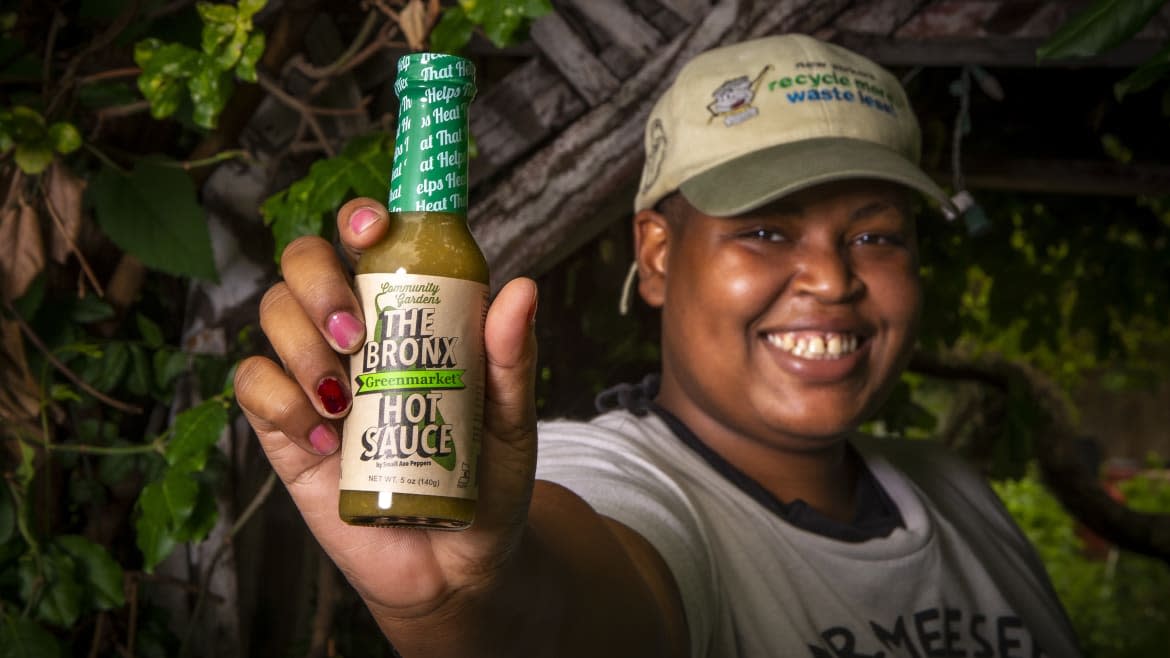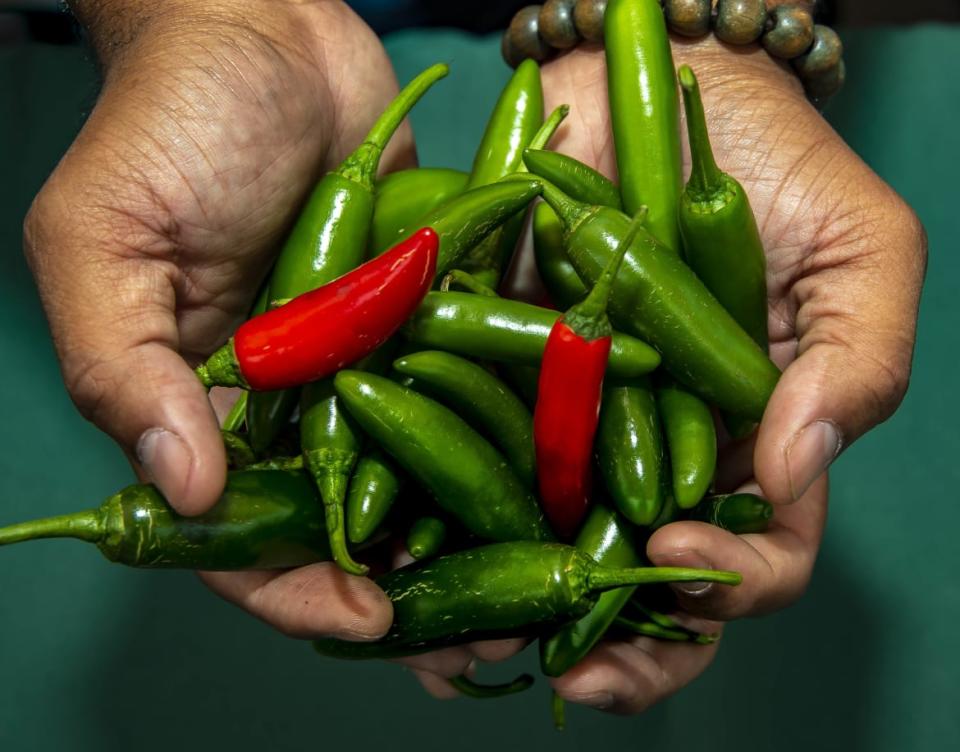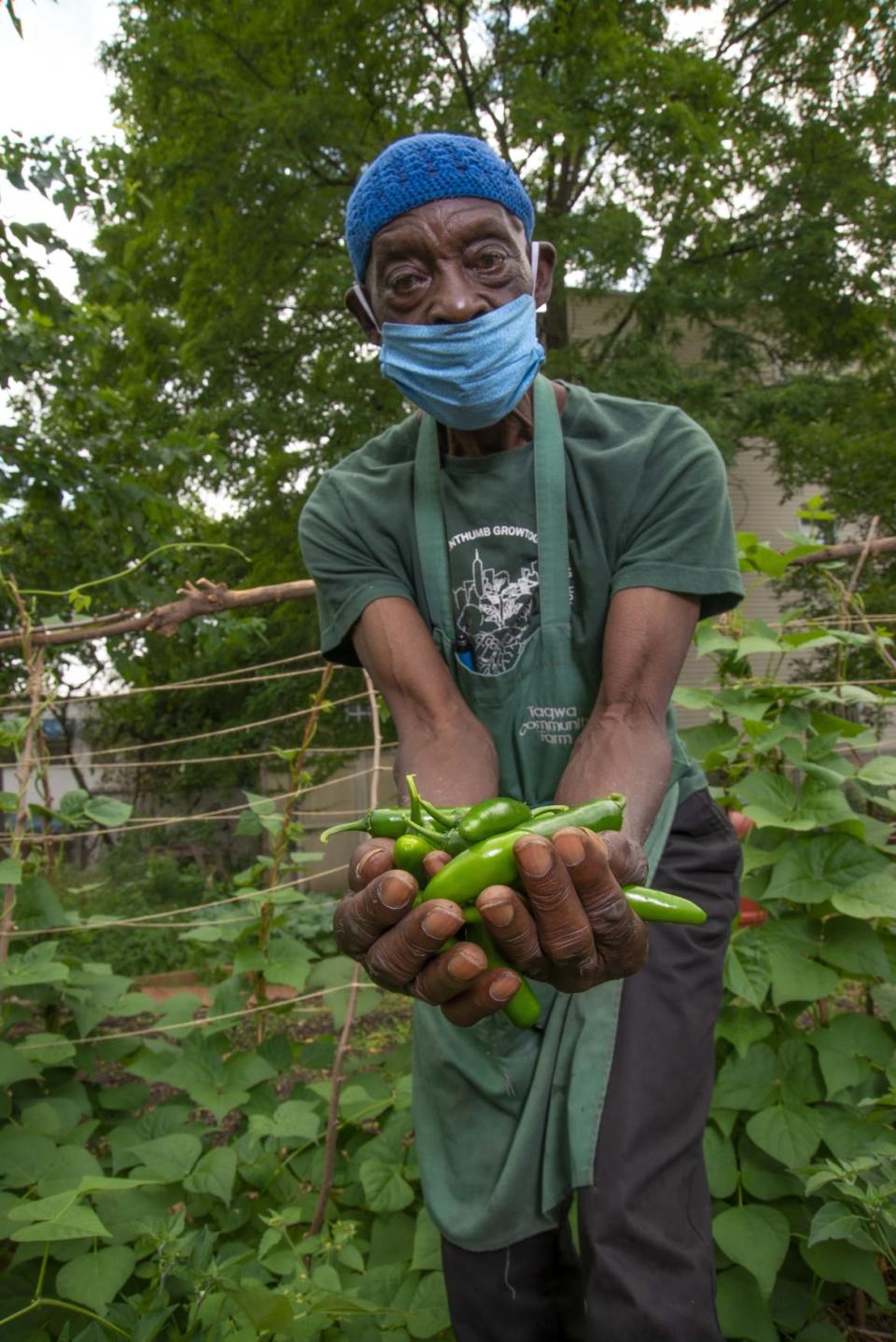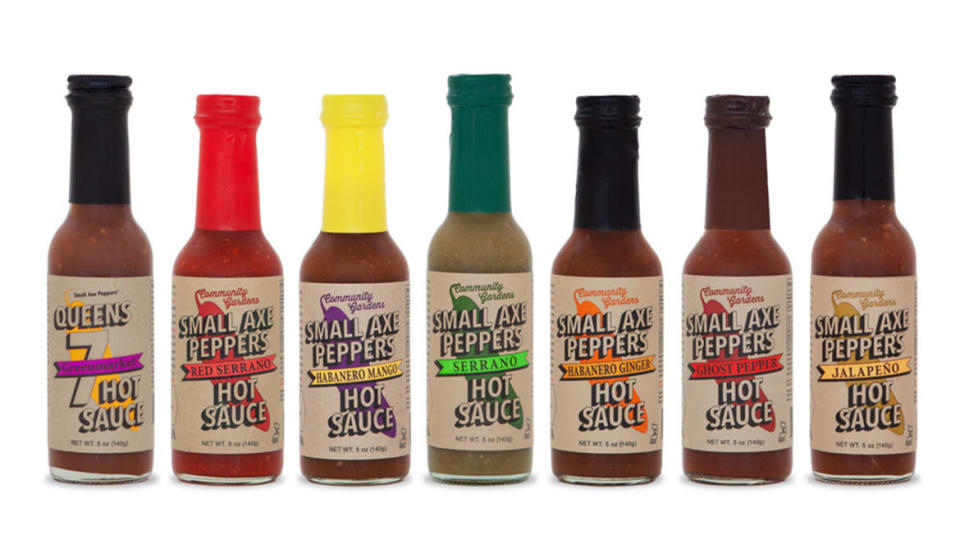Try the Bronx Hot Sauce Supporting Community Gardens

John Crotty was looking for a building in the Bronx for his affordable housing development organization when by chance he spotted an empty lot with southern exposure. In a flash, he saw his future.
“What’s going on with that space over there?” Crotty thought to himself. He immediately knew the trash strewn plot was perfect for a community garden. His next thought was about what they could possibly grow there. His mind jumped to growing peppers and making hot sauce out of them, because “it was the only thing we could grow in a confined space and make more of an end product. One hundred pounds of peppers becomes 500 pounds of hot sauce. All other fresh produce for commercial purposes goes the other way—you grow 100 pounds to sell 75.”
So Crotty contacted his childhood friend King Phojanakong, chef and owner of the Lower East Side’s Kuma Inn, and asked him to develop some sauces, which ultimately became the Small Axe Peppers line. “I told him what I wanted to do and asked him to be the chef.” Crotty adds, kidding, “I’m sure he regrets it.”

For Crotty, the fact that the sauces are delicious are almost an ancillary benefit. “The idea was to help gardens and make a commercially scalable product.”
While his plot was a good start he needed more peppers for a commercially successful line of hot sauces. So, “I went to GrowNYC. They do a fair amount of urban gardening things and run all the Greenmarkets in the city.” It helped that the head of that organization had worked with the City Council, back when Crotty was employed in the office of then mayor Michal Bloomberg. “After they got done laughing at me, they were helpful.” In its first year, Small Axe Peppers and GrowNYC donated pepper seedlings to five community gardens around the Bronx.
In its second year of operation, the number of gardens growing peppers for Small Axe Peppers grew to 25, and with additional help from the New York Botanical Garden and Bronx Green-Up, the gardens harvested more than a ton of chilis.
“GrowNYC does an annual plant sale for community gardens, and we gave away pepper seedlings through them. We wanted gardens to participate and they needed no barrier to entry.”
The model is this: Small Axe Peppers donates supplies and seeds to the gardens and come harvest, the gardens ship the peppers to a co-packing facility in Paramus, New Jersey, where the sauces are made according to recipes developed by chef Phojanakong. Small Axe Peppers works with two distributors and the sauces are now in 2,000 stores nationwide. They are also sold on the organization’s own website. The money goes back into the gardens.

The effects of community gardens on neighborhoods are tremendous. Empty lots in cities usually bring to mind discarded tires and empty beer cans rather than lush greenery, towering bean poles and ripe tomatoes. A garden transforms empty space into public space and transforms the way people feel about where they live. Crotty takes great pleasure watching gardeners grow more confident in their abilities, both in and out of the dirt. They are inspired to entrepreneurship, he says, and find themselves engaged in the satisfying work of representing the sauce they helped make.
This project has now grown nationwide, with 75 gardens participating in 15 cities. In Detroit, Small Axe Peppers partners with the Gleaners organization, which distributes produce to food pantries and soup kitchens. In Salt Lake City, Utah, the brand works with the International Rescue Committee backed New Roots Garden, which is staffed by refugees. Often, when a new garden partner is added to the program, a new sauce comes with it. The Truly Living Well garden in Atlanta contributes peppers to the most recent addition to the lineup—Georgia Peach Hot Sauce.

Small Axe Peppers sent me three flavors from its line to sample, all of them delicious. The non-geographically specific Mango Habanero sauce is sweet and funky with great depth from tamarind, and some excellent fruity citrus notes. I made the mistake of tasting it first, and it was hot enough that I had to take a break and eat some toast before I could come back to my flight.
Much milder is the Chicago sauce, which will be instantly recognizable to anyone who likes their hot dogs dragged through the garden. There’s a big yellow mustard note, underpinned by brown sugar and tomato, dill and celery salt. Basically it’s got everything but the Vienna beef frank and a bun. My favorite by far is the Bronx Green. It’s got a great clean heat from serrano peppers, made big and bright by the base of apple cider vinegar. But the garlic is what sends it over the top, though.
Since it’s been in my fridge, I have been found simply pouring it into a ramekin and eating it with corn tortilla chips as if it were salsa. It’s a delicious sauce, but I’m willing to entertain the idea that at least a little of what I find attractive about it is the unexpected. My favorite hot sauces come from Mexico, Jamaica and Louisiana. And now the Bronx? Add it to the list.
Get our top stories in your inbox every day. Sign up now!
Daily Beast Membership: Beast Inside goes deeper on the stories that matter to you. Learn more.

